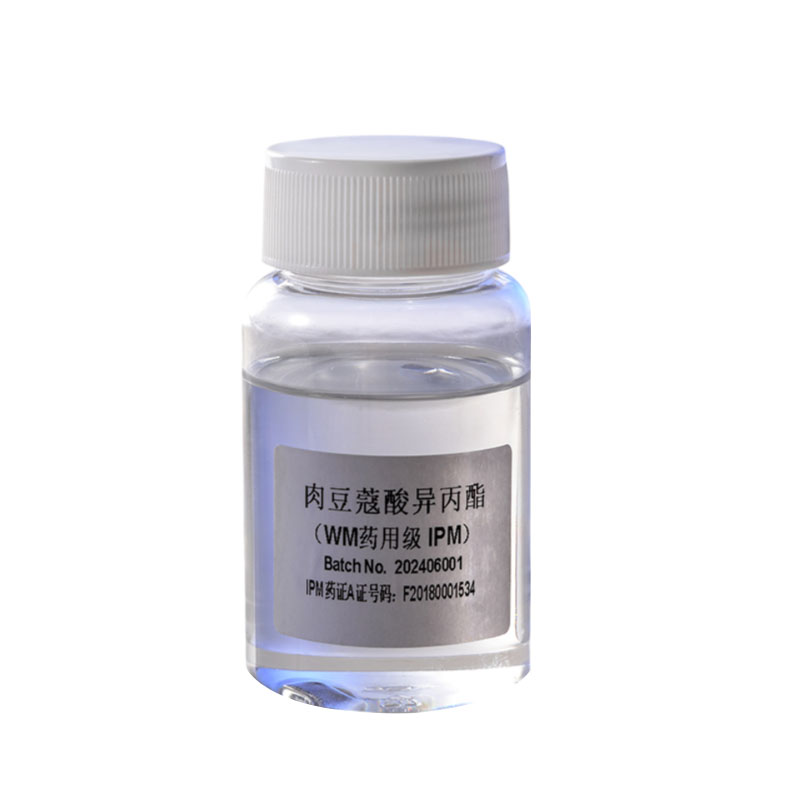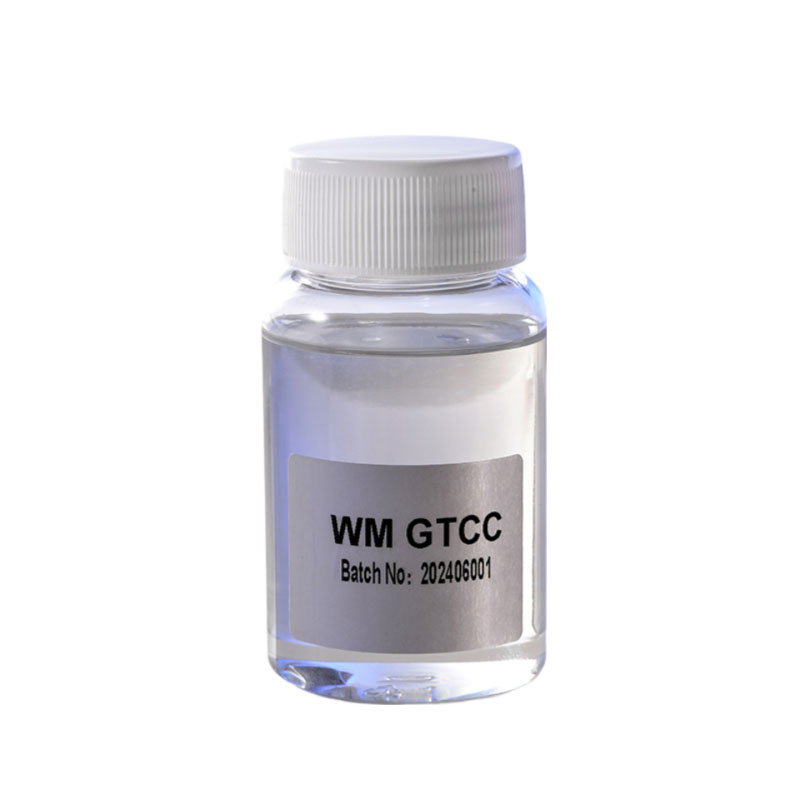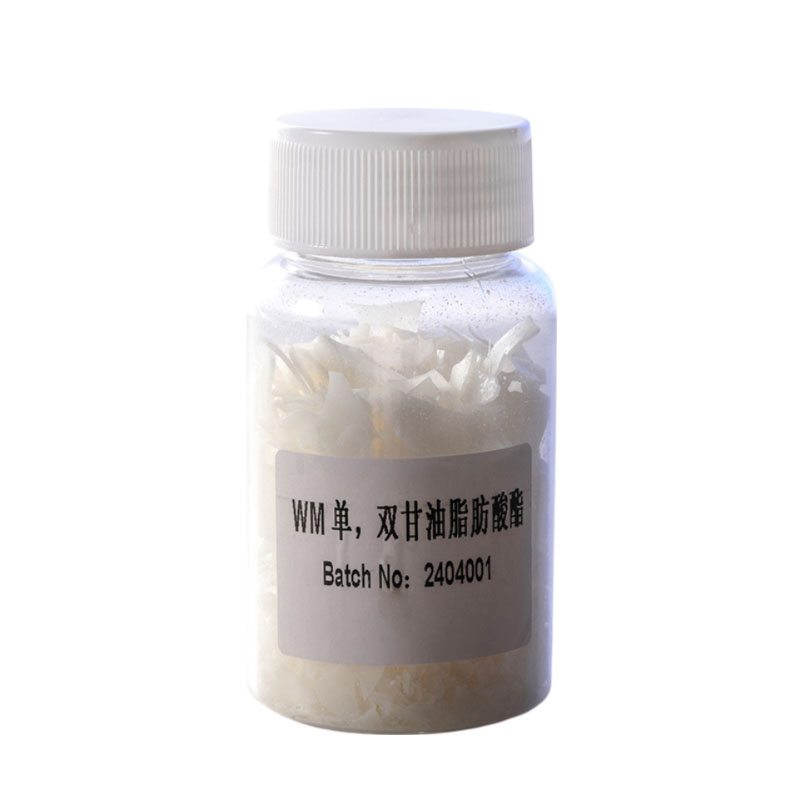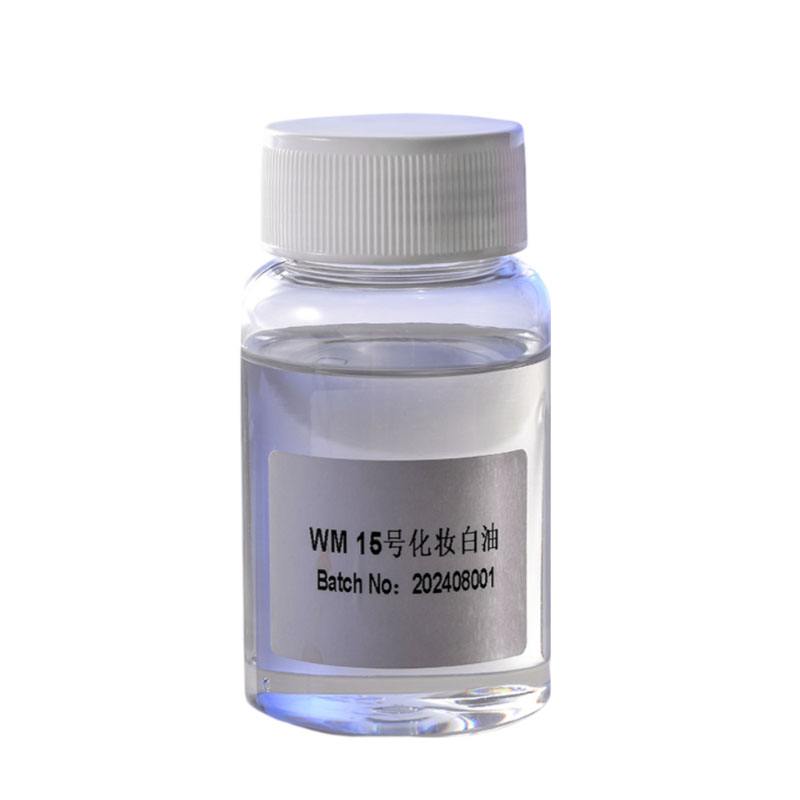How does monoglyceride improve dough elasticity and extensibility, and enhance the texture and quality of baked goods?
Release Time : 2025-09-29
During bread and pastry making, the physical properties of the dough directly determine the final texture and quality of the product. An ideal dough should have good extensibility for easy rolling and shaping, while also possessing sufficient elasticity to support gas expansion during fermentation, resulting in a uniform internal structure. However, in practice, the protein network in flour can become rigid due to over-mixing or insufficient resting time, leading to a dry, crumbly, or coarse-textured dough. Monoglyceride, as a food-grade emulsifier, acts as a "structure regulator" in this process, significantly improving dough processing performance and product quality through its interaction with gluten and starch.
The key function of monoglyceride lies in its unique molecular structure. One end is hydrophilic, while the other is hydrophobic, effectively reducing the interfacial tension between water and oil, promoting uniform mixing of the two phases. In the early stages of dough mixing, before the ingredients are fully combined, oil tends to exist as small droplets outside the gluten network, affecting its continuity and strength. Monoglyceride molecules rapidly adsorb to the oil droplets, encapsulating and dispersing them uniformly in the water phase, forming a stable emulsion. This even distribution of oil reduces mechanical hindrance to the gluten network, allowing gluten proteins to cross-link more freely, forming a denser and more elastic three-dimensional network.
Simultaneously, monoglyceride interacts with starch. Linear starch molecules in flour tend to re-arrange after gelatinization, leading to retrogradation and hardening of the bread. Monoglyceride binds to the helical structure of linear starch, forming a stable complex that prevents crystallization during cooling. This process not only slows down starch retrogradation but also indirectly improves water retention in the dough. Moisture is more effectively retained, making the dough softer and more pliable during kneading, enhancing its extensibility and preventing cracking or shrinkage.
During fermentation, large amounts of carbon dioxide gas are produced within the dough, forming bubbles trapped within the gluten network, creating a honeycomb-like structure. If the gluten network is too fragile or unevenly distributed, air bubbles can easily merge or rupture, resulting in a coarse texture or collapse. Monoglycerides improve the gluten structure, enhancing its elasticity and resilience, making the cell walls more flexible and able to withstand greater internal pressure without rupturing. Simultaneously, the emulsifying effect ensures even distribution of fat within the gluten network, acting as a lubricant and further improving dough extensibility. This synergistic effect allows the dough to expand evenly during fermentation, forming a fine, uniform cell structure.
During baking, the effects of monoglycerides continue. With heat, starch gelatinizes and proteins coagulate and set. The complexes formed by monoglycerides help maintain uniform moisture distribution, preventing localized drying or excessive shrinkage. The final bread or pastry has a smooth, silky texture, with small, evenly distributed air pockets, resulting in a soft and elastic mouthfeel. Whether it's sliced bread, cake, or Chinese pastries, the texture and appearance are consistently excellent.
Furthermore, adding monoglycerides improves the processability of the dough. In industrial production, dough often undergoes prolonged transport, dividing, and shaping processes, requiring high extensibility and resistance to mechanical damage. With monoglycerides, the dough is less prone to breakage under mechanical stress, and easier to shape, reducing waste and improving production efficiency.
Ultimately, monoglycerides don't simply "soften" the dough; they optimize the interactions between different components at the molecular level, creating a more balanced and stable microstructure. They achieve the perfect balance between extensibility and elasticity, ensuring a consistently soft and delicate texture in every slice of bread. This invisible improvement is the silent revolution that modern food science brings to traditional baking techniques.
The key function of monoglyceride lies in its unique molecular structure. One end is hydrophilic, while the other is hydrophobic, effectively reducing the interfacial tension between water and oil, promoting uniform mixing of the two phases. In the early stages of dough mixing, before the ingredients are fully combined, oil tends to exist as small droplets outside the gluten network, affecting its continuity and strength. Monoglyceride molecules rapidly adsorb to the oil droplets, encapsulating and dispersing them uniformly in the water phase, forming a stable emulsion. This even distribution of oil reduces mechanical hindrance to the gluten network, allowing gluten proteins to cross-link more freely, forming a denser and more elastic three-dimensional network.
Simultaneously, monoglyceride interacts with starch. Linear starch molecules in flour tend to re-arrange after gelatinization, leading to retrogradation and hardening of the bread. Monoglyceride binds to the helical structure of linear starch, forming a stable complex that prevents crystallization during cooling. This process not only slows down starch retrogradation but also indirectly improves water retention in the dough. Moisture is more effectively retained, making the dough softer and more pliable during kneading, enhancing its extensibility and preventing cracking or shrinkage.
During fermentation, large amounts of carbon dioxide gas are produced within the dough, forming bubbles trapped within the gluten network, creating a honeycomb-like structure. If the gluten network is too fragile or unevenly distributed, air bubbles can easily merge or rupture, resulting in a coarse texture or collapse. Monoglycerides improve the gluten structure, enhancing its elasticity and resilience, making the cell walls more flexible and able to withstand greater internal pressure without rupturing. Simultaneously, the emulsifying effect ensures even distribution of fat within the gluten network, acting as a lubricant and further improving dough extensibility. This synergistic effect allows the dough to expand evenly during fermentation, forming a fine, uniform cell structure.
During baking, the effects of monoglycerides continue. With heat, starch gelatinizes and proteins coagulate and set. The complexes formed by monoglycerides help maintain uniform moisture distribution, preventing localized drying or excessive shrinkage. The final bread or pastry has a smooth, silky texture, with small, evenly distributed air pockets, resulting in a soft and elastic mouthfeel. Whether it's sliced bread, cake, or Chinese pastries, the texture and appearance are consistently excellent.
Furthermore, adding monoglycerides improves the processability of the dough. In industrial production, dough often undergoes prolonged transport, dividing, and shaping processes, requiring high extensibility and resistance to mechanical damage. With monoglycerides, the dough is less prone to breakage under mechanical stress, and easier to shape, reducing waste and improving production efficiency.
Ultimately, monoglycerides don't simply "soften" the dough; they optimize the interactions between different components at the molecular level, creating a more balanced and stable microstructure. They achieve the perfect balance between extensibility and elasticity, ensuring a consistently soft and delicate texture in every slice of bread. This invisible improvement is the silent revolution that modern food science brings to traditional baking techniques.









